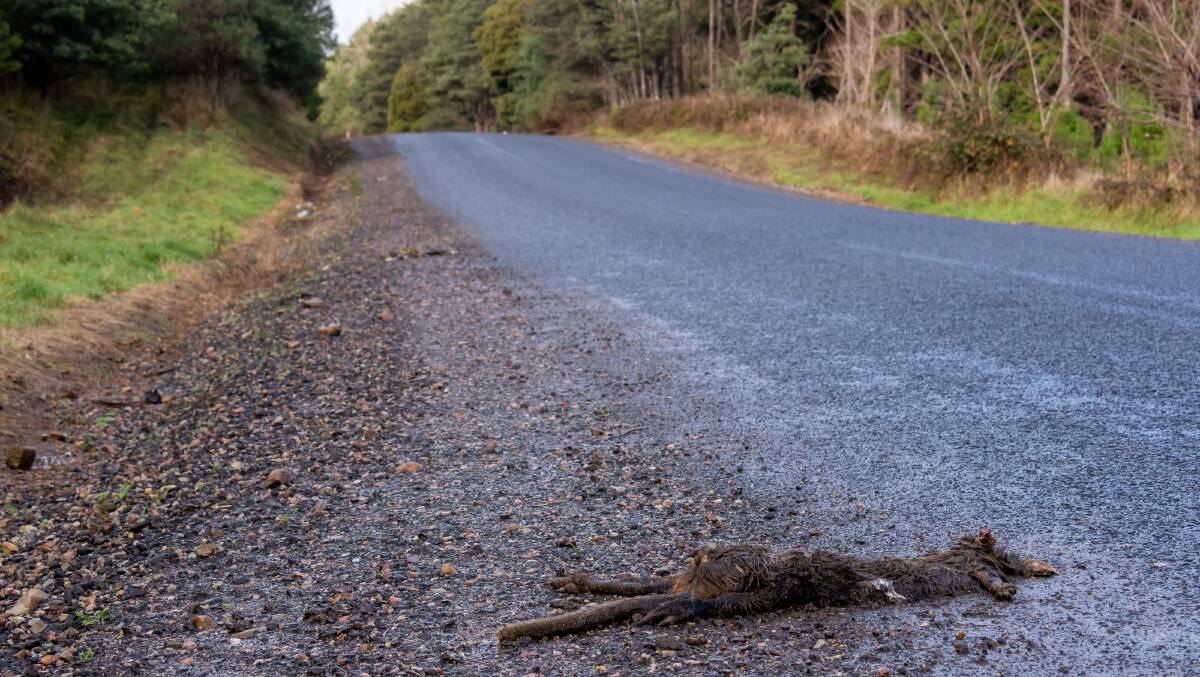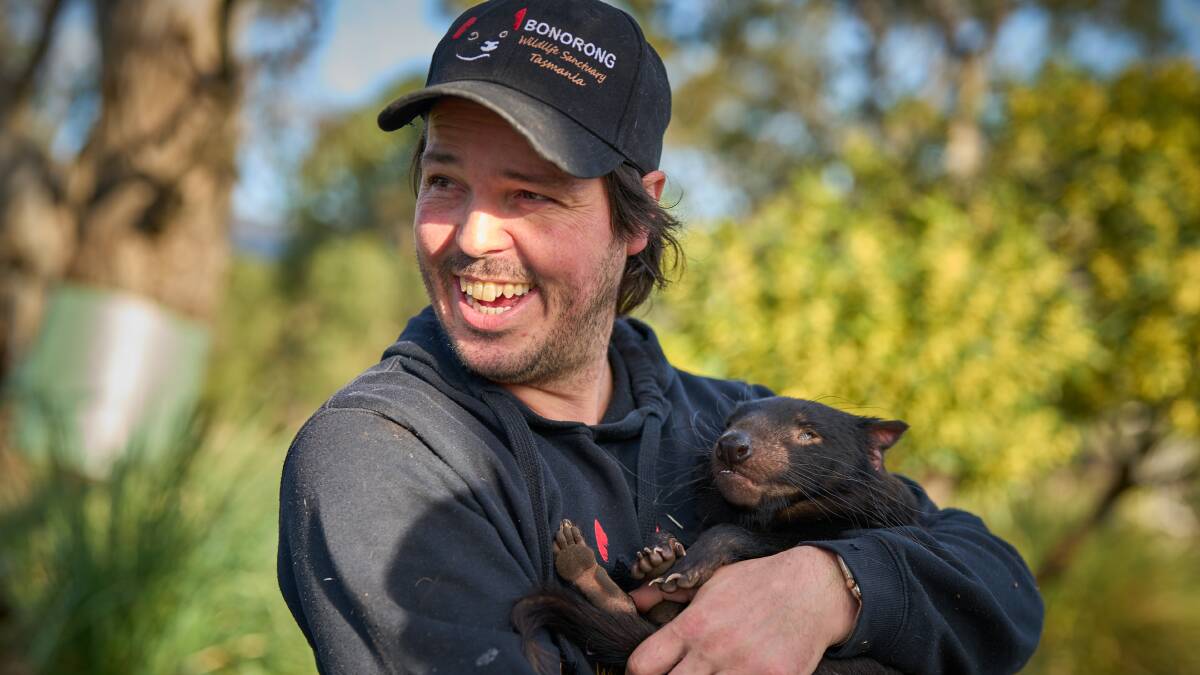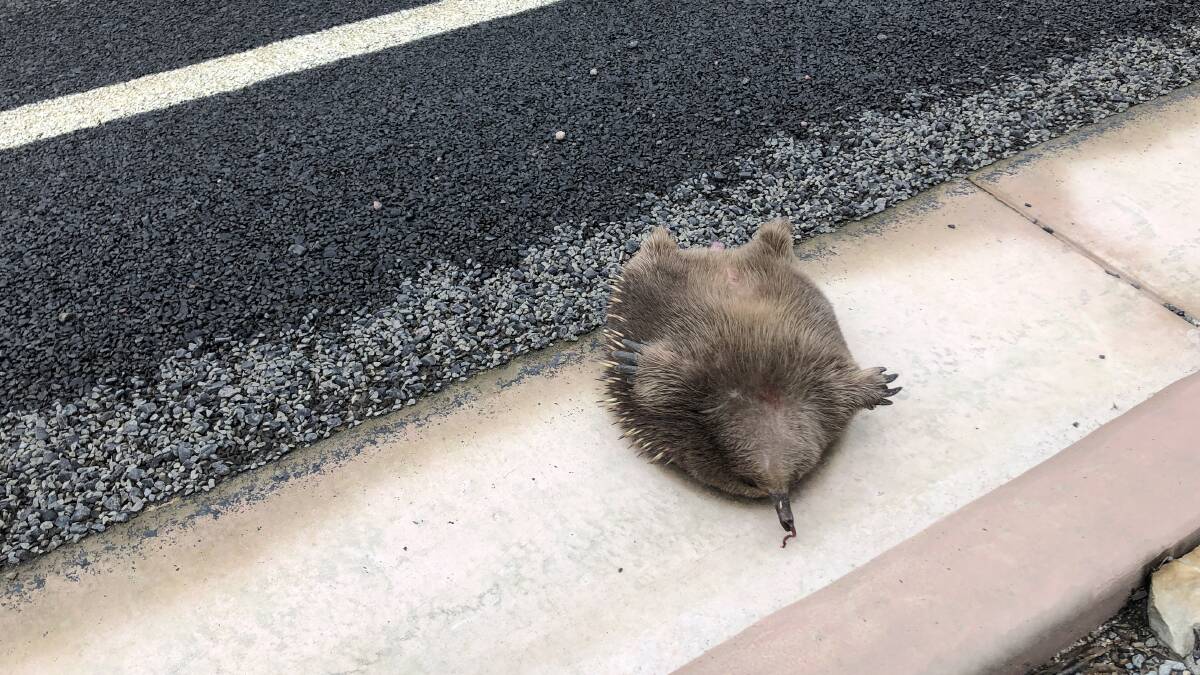
Whether travelling suburban streets or rural back roads, driving on a road littered with carcasses is an all too common sight.
Subscribe now for unlimited access.
or signup to continue reading
Tufts of fur and feathers, bruised and bloodied bodies pecked at by opportunistic ravens litter the foreground of the otherwise revered landscapes.
The situation is so grim that Tasmania has earned a reputation as the roadkill capital of Australia.
- Listen to the full story on the podcast player above or search Voice of Real Australia in your preferred podcast app
Research indicates an average of 32 animals die every hour on Tasmanian roads - and that's just the deaths which are reported.
It is estimated the state's native animal roadkill toll reaches 500,000 annually, killing marsupials, birds and reptiles.
Bonorong Wildlife Sanctuary director Greg Irons says it's so common that Tasmanians have become desensitised to it.

"We look at it as a whole and say, 'Oh, well, look, it's just a few being killed on the roads, so you know, it's not going to impact the entire species', and I'm calling bollocks to that, I really am.
"Every single life does count. I'm not just talking about the endangered species."
Bonorong Wildlife Sanctuary - about 20 minutes north of Hobart - is the state's main wildlife rescue service.
With a network of over 1000 volunteers spread across the island, the team are often the first responders for injured wildlife.
But every year they're getting busier and busier.
"We see more calls every single year than we've seen the year before. And unfortunately, that number shows no sign of going backwards," Greg says.
It's not just the number of wildlife dying that is startling, but the suffering they endure.

People often assume there's no way an animal will survive being hit by a car, and leave it.
"What they don't realise is how hearty our animals are. So these animals can survive for weeks in that condition," says Greg.
"And unfortunately, through our rescue service we'll sometimes get called for those animals that are found two or three weeks after they were injured and the situations they are in and the suffering they are going through cannot be put into words."
So why is roadkill such a major issue for the Apple Isle? And what needs to be done to prevent wildlife dying on Tasmanian roads?
Government efforts
The Tasmanian government has made efforts to reduce the state's roadkill.
It has installed road signage and invested in public education, and has also trailed virtual fencing and culverts beneath the road.
As part of its Save the Tasmanian Devil Program, it trialled the Roadkill TAS App, a citizen science project inviting people to report roadkill over a three year period, which finished in August 2021 and was intended to help identify roadkill hotspots.
The government is planning to release a replacement in some form.
But many believe it's not enough. The toll is rising, not falling.
"We'll sometimes get called for those animals that are found two or three weeks after they were injured and the situations they are in and the suffering they are going through cannot be put into words."
- Bonorong Wildlife Sanctuary director Greg Irons
In 2020, a petition attracting nearly two thousand signatures was put to the state parliament calling for greater wildlife safety measures.
Petitioners demanded the government implement more infrastructure-based solutions, including wildlife rope bridges, wildlife underpass crossings and more virtual fencing, measures that had been used interstate and internationally.
IN OTHER NEWS:
Greg wants to see more research, and to heed the lessons of what has worked elsewhere.
"Sometimes you don't have to reinvent the wheel," he says.
"We believe that while it'll be a huge job to fix up all the existing roads in Tassie, on every new road that's built we're falling further behind. So at least, let's start implementing things on the newer roads that are built so we're not falling further behind the eight ball."
Legal protections
Takayna/Tarkine in the state's North-West is a slice of heaven for native wildlife.
It's the world's second-largest temperate rainforest, spanning around 477,000 hectares, and provides habitat for life found nowhere else on the planet.
It's where threatened species like the Tasmanian devil and the spotted-tail quoll still have a stronghold.
But a decision made by Tasmania's Environment Protection Agency (EPA) in this region could expose them to the risk of roadkill.
In 2013, the EPA approved an application by Venture Minerals to mine iron ore in the region.

Conditions placed on the Riley Creek mine permit prevented vehicles from operating between dusk and dawn, when nocturnal creatures - like the Tassie Devil - are most active.
But last year, Venture Minerals sought to vary the permit to allow for night time trucking, and the EPA approved it.
The EPA placed conditions on this revised permit - including a 60 kilometres an hour speed limit, mandatory education for drivers, and virtual fencing in identified roadkill hotspots.
Even though the mine was temporarily shut down in early September, just weeks after the permit came into effect, conservationists remain concerned that Venture Minerals can restart the mine and use the road at any time.
The EPA decision has sparked concern from environmental groups, including the Tarkine National Coalition, which is taking the issue to the Tasmanian Supreme Court for judicial review.
Their concern is that the EPA varied the permit conditions quietly and with no public consultation.
For Claire Bookless, a lawyer at the Environmental Defenders Office, the EPA doesn't have the legal authority to make decisions like these.
"We'll be asking the court to decide whether the EPA was operating within the scope of the powers under the Environmental Management and Pollution Control Act," she says.
"And we will be asking the court to decide whether or not the EPA took account of things like the objects of its legislation, including the need to maintain genetic diversity, and the need to take a precautionary approach when making decisions under that act."
'Minimising that impact'

According to Venture Minerals' chief executive Andrew Radonjic, the company is doing all it can to mitigate roadkill.
The company has supported the Save the Tasmanian Devil Program since 2009, funding university research, as well as a captive breeding program.
"We're well aware of the situation and importance," he says.
"We've been out there removing waste and roadkill, so [we're] minimising that impact.
"We're doing, if you like, above and beyond what we need to do, because we want to embed ourselves in with society, the local people down there."
Venture Minerals' push to operate vehicles at night is about efficiency, Mr Radonjic says, with winter's limited daylight hours leaving a small window within which to work.
He adds that conservationists aren't looking at the broader picture and the opportunities the Riley Creek mine brings to the local community, offering jobs and economic prosperity.
Time to change attitudes
While roadkill doesn't appear to be going away, there are some things we can all do to reduce the death toll on Tasmanian roads.
Greg says we should time our drives and avoid travelling at night when wildlife is up and about, and urges us all to slow down at nighttime.
"We're not talking crawling along at 30ks an hour in a 100 zone, it can be a very small sacrifice of time," he says.
Greg says slowing down to 80km might only add a couple of minutes to a half an hour drive, but could add on years to an animal's life.
"The reaction times we then have for wildlife jumping in front of us and the time to actually slow down is just increased so, so much to give them every chance," he says.
Most of all, Greg says it's time to stop being complacent.
"We are the world record holder when it comes to wildlife killed on the road. It's a terrible stat to have, and we should all be striving to fix it," he says.
Listen to the full story on the podcast search Voice of Real Australia, on Apple Podcasts, Spotify or your preferred platform. You can also listen on the webplayer above.














